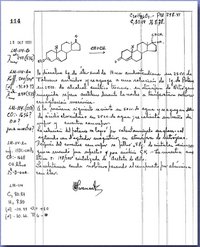LOS ANGELES -- Simvastatin lowered testosterone levels by 41%, normalized gonadotropin levels, and reduced cardiovascular risk factors in a small, randomized, controlled trial, suggesting that statins may be a potential treatment for polycystic ovarian syndrome.
"Statins would improve the metabolic profile in those patients in terms of lipid levels as well as improve the hormonal problems," study investigator Antoni J. Duleba, M.D., said during the annual meeting of the Society for Gynecologic Investigation.
The study is the first to demonstrate these benefits in women with polycystic ovarian syndrome (PCOS). Dyslipidemia is common with PCOS, but statins are almost never used in PCOS, because the patients are typically young women trying to get pregnant or are at risk of getting pregnant. Statins are contraindicated in pregnancy, said Dr. Duleba of Yale University, New Haven.
The study eliminated pregnancy as a consideration by placing all 48 study participants on oral contraceptive pills (OCP) containing 20 mcg of ethinyl estradiol and 150 mcg of desogestrel. One 24-patient cohort was treated with 20 mg of simvastatin daily, along with OCP; the other 24 patients received only OCP.
Investigators from Yale and Poznan University of Medical Sciences in Poland are conducting the ongoing trial in that country. The women are about 23 years old on average. None received any hormonal treatment or OCPs for at least 3 months before enrollment. Organon Inc. supplied the OCP Marvelon, and Polfa, a Polish pharmaceutical company, provided simvastatin.
A comparison of hormonal levels at baseline and 12 weeks showed total testosterone fell significantly--an average of 34.6 ng/dL (41%) in the OCP/simvastatin group. By contrast, in the OCP-alone group, levels fell by only 10.9 ng/dL (14%).
Average dehydroepiandrosterone sulfate (DHEA-S) fell 26% in the OCP/simvastatin patients and 28% in the OCP-alone group. Luteinizing hormone (LH), however, was reduced 43% in the OCP/simvastatin group vs. 9% in the OCP-alone cohort.
FSH declined 8%, which was not significant, in the OCP/simvastatin patients, but it increased 21% in those taking just OCPs.
The LH:FSH ratio declined significantly in the OCP/simvastatin group (44%) and fell by 12% in the OCP-alone group--not a statistically significant decline.
As expected, the simvastatin group had a significantly improved metabolic profile: Total cholesterol was 10% lower with simvastatin/OCP vs. 8% higher with OCP alone. Low-density lipoprotein (LDL) cholesterol dropped a significant 24% in the simvastatin/OCP patients, but stayed the same in the control group. Conversely, triglyceride levels increased 21% in the OCP-only patients but were not much changed in simvastatin/OCP patients.
Increases in HDL cholesterol levels were similar: 9% with simvastatin/OCP and 13% with OCP alone. Neither group had a significant improvement in insulin sensitivity or change in body mass index.
Dr. Duleba reported that hyperandrogenia declined dramatically in the simvastatin/OCP arm, but he said 3 months is too early to determine whether this will lead to improvements in excessive hair growth or other clinical conditions associated with PCOS.
The trial employs a crossover design by which the groups have since switched regimens. The investigators also are looking at biochemical markers of endothelial function and cardiovascular risk, which Dr. Duleba said is increasingly a patient concern.
"We used to only see women who wanted to get pregnant and, on occasion, because of complaints of hirsutism," he said. "Now, with greater understanding of cardiovascular risk factors, people come to the office and say, 'What can we do to protect ourselves from heart disease, diabetes, high blood pressure--all the cardiovascular problems that our mothers, aunts, and grandmothers had?'"
Although he would not recommend statins to women trying to get pregnant, he concluded that statins could eventually prove to be the answer to their question about cardiovascular risk. "In the long term, I hope to show clinical end points," he said.
BY JANE SALODOF MACNEIL
Southwest Bureau
COPYRIGHT 2005 International Medical News Group
COPYRIGHT 2005 Gale Group



